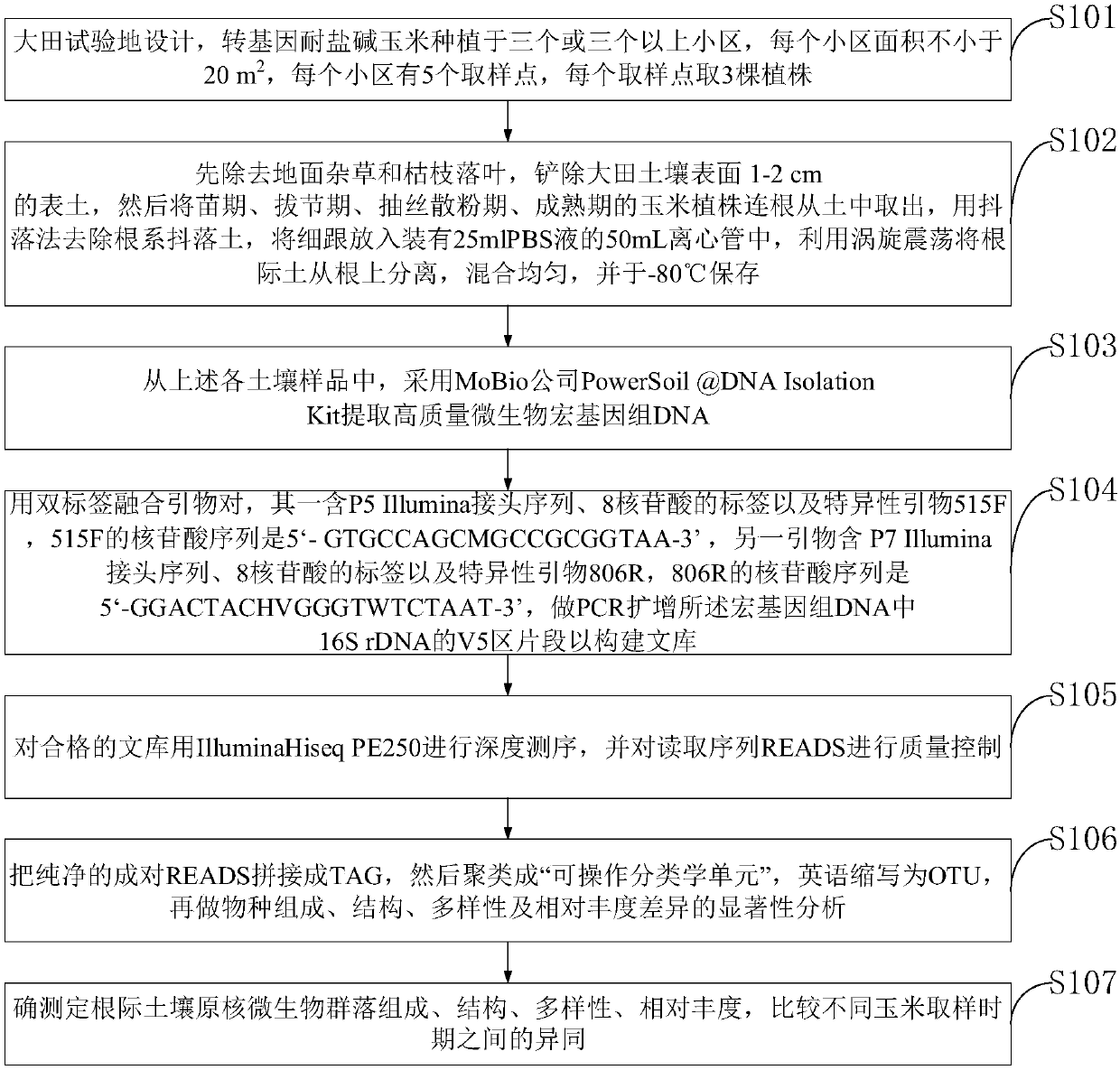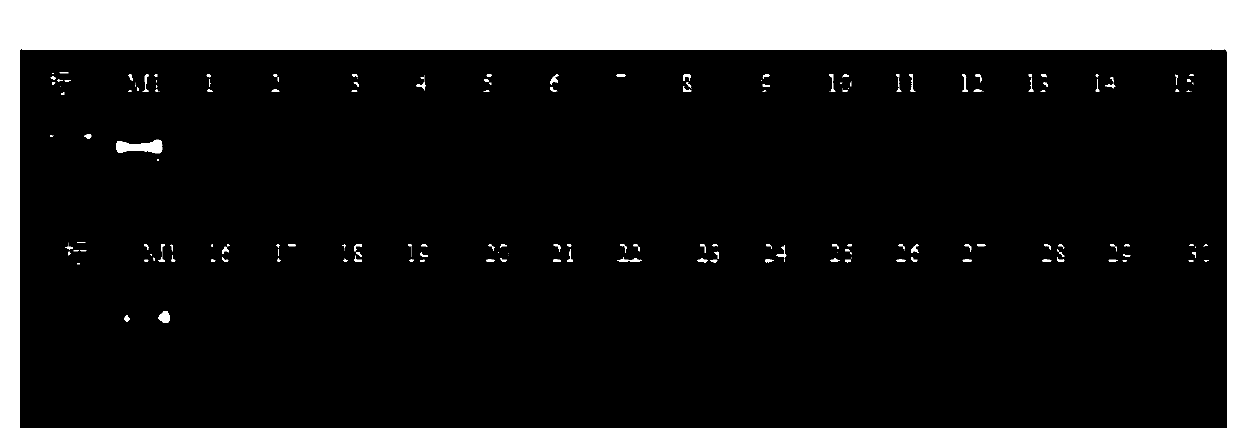Method and system for detecting maize rhizosphere soil microorganisms based on deep sequencing
A deep sequencing and rhizosphere soil technology, applied in the field of soil microbiology, can solve the problem of inability to accurately detect differences in the composition, structure, diversity and relative abundance of rhizosphere microbial communities of different genotypes, low coverage of non-culturable microorganisms, Inaccurate detection results and other problems, to achieve the effect of improving the accuracy of acquisition, low cost, and reliable results
- Summary
- Abstract
- Description
- Claims
- Application Information
AI Technical Summary
Problems solved by technology
Method used
Image
Examples
Embodiment Construction
[0035] In order to make the object, technical solution and advantages of the present invention more clear, the present invention will be further described in detail below in conjunction with the examples. It should be understood that the specific embodiments described here are only used to explain the present invention, not to limit the present invention.
[0036] The existing technology has low detection throughput, small scale, and low coverage of non-culturable microorganisms; it cannot accurately detect differences in the composition, structure, diversity, and relative abundance of rhizosphere microbial communities of different genotypes of plants, including transgenic crops.
[0037] 16S rDNA high-throughput sequencing technology, also known as 16S rDNA deep sequencing technology, is based on the fact that 16S rDNA is the most commonly used "molecular clock" in the analysis of prokaryotic microbial taxonomy, and its sequence contains 9 hypervariable regions. And 8 conserv...
PUM
 Login to View More
Login to View More Abstract
Description
Claims
Application Information
 Login to View More
Login to View More - R&D
- Intellectual Property
- Life Sciences
- Materials
- Tech Scout
- Unparalleled Data Quality
- Higher Quality Content
- 60% Fewer Hallucinations
Browse by: Latest US Patents, China's latest patents, Technical Efficacy Thesaurus, Application Domain, Technology Topic, Popular Technical Reports.
© 2025 PatSnap. All rights reserved.Legal|Privacy policy|Modern Slavery Act Transparency Statement|Sitemap|About US| Contact US: help@patsnap.com



